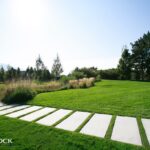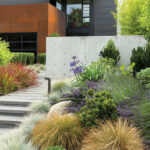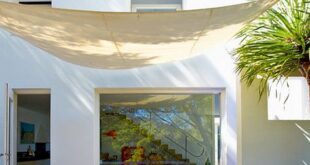Modern landscape design has seen a significant shift in recent years, with a focus on clean lines, minimalist aesthetics, and sustainability. Gone are the days of elaborate, high-maintenance gardens filled with exotic plants and over-the-top features. Instead, today’s landscape designers are embracing a more understated and practical approach that is both visually appealing and eco-friendly.
One of the key principles of modern landscape design is the use of sustainable materials and practices. This includes incorporating native plants that are well-suited to the local climate and require less water and maintenance. Additionally, designers are choosing materials such as recycled wood, concrete, and metal that have minimal impact on the environment. By implementing these strategies, modern landscapes are not only beautiful but also support biodiversity and reduce the overall carbon footprint.
Another defining feature of modern landscape design is the emphasis on functionality and usability. Outdoor spaces are no longer just for show but are now seen as extensions of the home that should be enjoyed and used to their full potential. This has led to the creation of outdoor living areas that include features such as kitchens, seating areas, fire pits, and even outdoor showers. These spaces are designed to be both practical and stylish, allowing homeowners to entertain guests or relax in comfort while enjoying their surroundings.
In terms of aesthetics, modern landscape design often incorporates elements of minimalism and simplicity. Clean lines, geometric shapes, and monochromatic color schemes are common features of contemporary landscapes. This approach creates a sense of balance and harmony that is both calming and visually appealing. Additionally, modern designers are using techniques such as repetition, contrast, and focal points to create interest and draw the eye to specific areas of the landscape.
Technology is also playing a significant role in modern landscape design. Smart irrigation systems, outdoor lighting, and audiovisual elements are being integrated into outdoor spaces to enhance their functionality and enjoyment. These technologies not only make it easier to maintain the landscape but also allow homeowners to create personalized, immersive outdoor experiences.
Overall, modern landscape design is all about creating outdoor spaces that are beautiful, practical, and sustainable. By incorporating native plants, sustainable materials, functional features, and cutting-edge technology, designers are able to create landscapes that are not only visually stunning but also environmentally friendly and easy to maintain. With a focus on simplicity, functionality, and innovation, modern landscapes are transforming outdoor spaces into modern-day sanctuaries for homeowners to enjoy and appreciate for years to come.
















